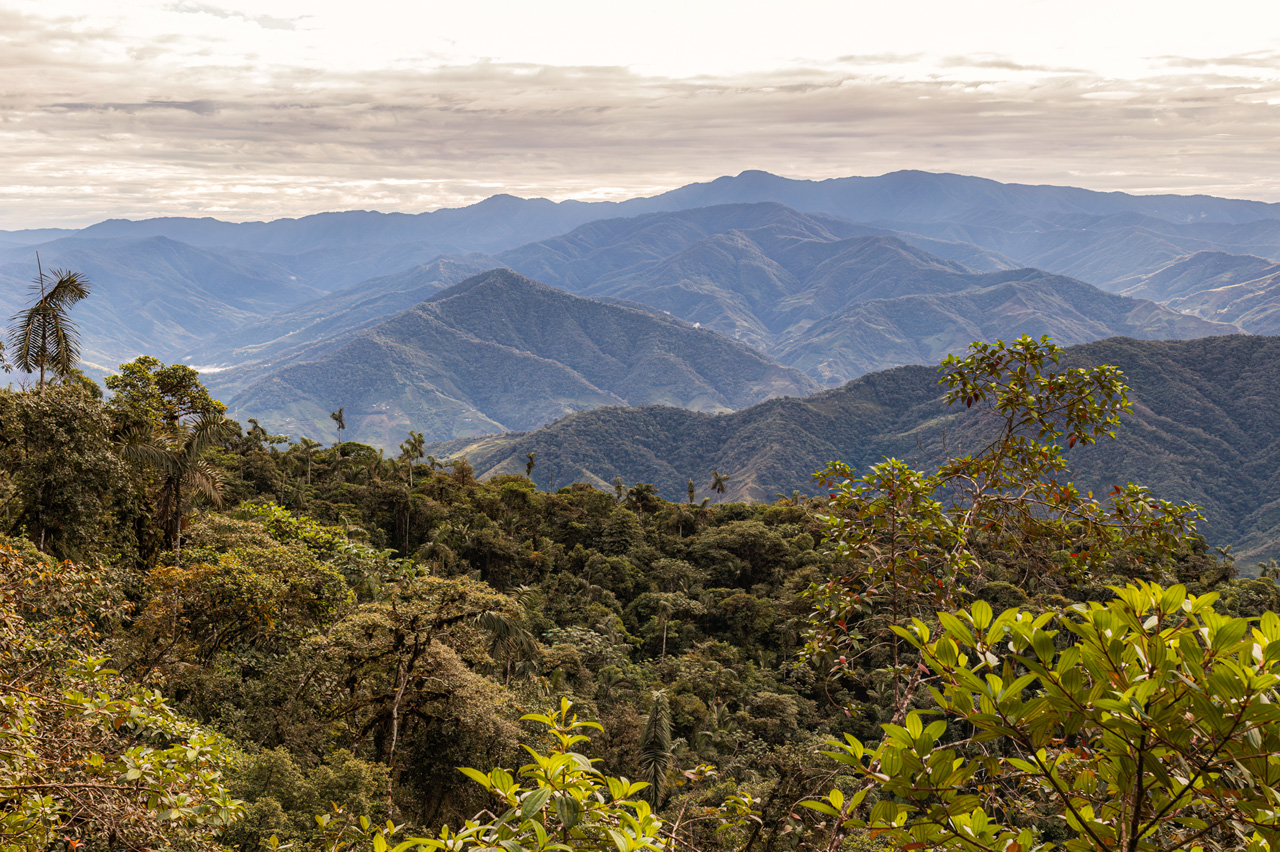CCU Tatamá-Farallones-Munchique-2016
In 2016, Conservamos la Vida conducted surveys along the Western Cordillera (Chocó, Valle del Cauca, and Cauca) to assess the occupancy patterns of the Andean bear at two spatial scales: habitat use (one square kilometer) and landscape scale (16 square kilometers). The main findings revealed that the Andean bear had an average occupancy rate of 54% in the analyzed sector.
The analysis indicated that both the amount of remaining natural habitat in the bears' immediate surroundings and the presence of extensive cattle ranching negatively affect their probability of occupancy. This means that when there is a combination of less available habitat and greater livestock presence, the bear's occurrence in the landscape decreases.
To diagnose the landscape where conflicts have arisen, over 500 surveys were conducted across the mentioned departments in areas where the bear's distribution overlaps with productive activities.
From this characterization, it was found that, in general, less than 2% of all respondents in 2016 reported having had negative interactions with the Andean bear.
Based on these results, seven locations were prioritized for implementing management interventions. The selection was based on factors such as damages caused, the impact of productive activities on habitat loss, connectivity fragmentation, and consequently, the presence of the Andean bear and the vulnerability of certain productive activities.
 Photo: Jhonattan Vanegas
Photo: Jhonattan Vanegas
Public order conditions, types of productive management, and the willingness of families to change their economic activities and/or management practices were also considered in the selection process.
The chosen locations were El Águila, Lobo Guerrero, Bolívar, El Dovio, and Dagua in Valle del Cauca, as well as El Tambo in the department of Cauca.
Due to public order issues, the Conservamos la Vida alliance has so far only carried out dialogue processes and implemented conservation actions in El Águila, Dagua (Valle del Cauca), and El Tambo (Cauca).
CCU Tatamá-Farallones-Munchique-2021
In 2021, a new occupancy monitoring of the Andean bear was conducted in the UNC Tatamá-Farallones-Munchique.
Findings revealed that the occupancy rate of the Andean bear increased from 52% in 2016 to 76% in 2021. This result reinforced the idea that a higher proportion of natural habitat correlates with greater Andean bear occupancy.
In both monitoring periods, the sites with the highest detection rates were those where the bear's preferred food plants were present, such as puya (Puya), palms (Arecaceae), fruit-bearing shrubs (Moraceae), and melastomes (Melastomataceae).
Regarding the conflict landscape characterization, since 2017, over 170 surveys have been conducted in various properties within the UNC Tatamá-Farallones-Munchique. These surveys aimed to identify conflict events between Andean bears and livestock and assess changes in management and tolerance indicators through vulnerability, economic, and perception indices.
 Photo: Jhonattan Vanegas
Photo: Jhonattan Vanegas
Between 2019 and 2022, livestock damages were reported in the El Águila and Dagua-Anchicayá localities, primarily caused by pumas (Puma concolor).
Since then, support and training for National Natural Parks personnel have been strengthened to ensure a timely response and provide guidance to rural communities facing such events.
Regarding the indicators on the properties, since 2022, vulnerability has decreased in the locality of El Águila thanks to the management actions implemented in the area.
And although economic vulnerability remains high on some properties, cattle ranching does not have significant repercussions in this area, as the local economy relies mainly on coffee production.
Meanwhile, the tolerance indicators have shown that, across all localities within this Core Conservation Unit (CCU), perceptions of the Andean bear have been positive.
Traslated with AI support